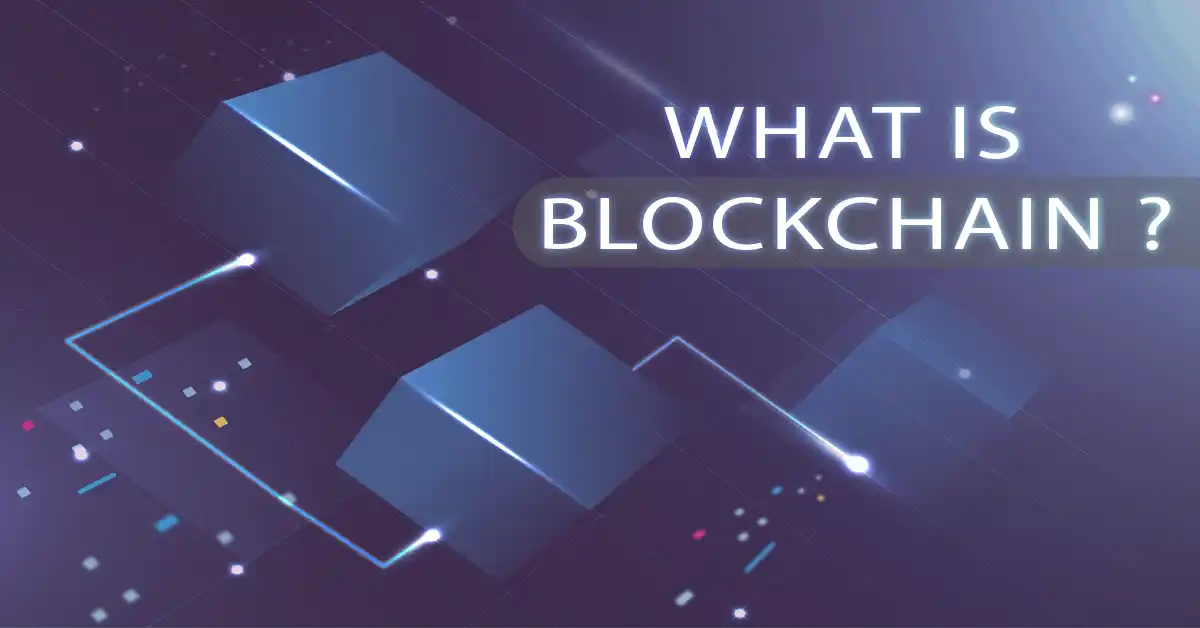In a world where digital technology is rapidly evolving, the term “blockchain” has emerged as a buzzword with a significant impact on various industries. But what exactly is blockchain, and how does it work? In this comprehensive guide, we will explore the concept of blockchain, its functionality, use cases, and much more.
What is Blockchain in Simple Terms?
At its core, a blockchain is a distributed and decentralised digital ledger. Imagine it as a public record book that contains a continuously growing list of records or transactions, known as “blocks.” Each block is linked to the previous one, forming a “chain,” hence the name “blockchain.” This decentralised ledger is stored on a network of computers, making it secure and tamper-resistant.
What is Blockchain and How it Works?
Blockchain operates on a peer-to-peer network where multiple nodes (computers) collaborate to validate and record transactions. Here’s a simplified explanation of how it works:
- Transaction Initiation: When a transaction occurs, it is grouped with others in a block.
- Verification: The block is verified by network nodes. They confirm the validity of the transaction and check if the sender has the necessary funds.
- Consensus: A consensus mechanism is used to ensure that all nodes agree on the transaction’s validity. The most common consensus method is Proof of Work (PoW) or Proof of Stake (PoS).
- Adding to the Chain: Once the block is verified and approved, it is added to the existing blockchain.
- Decentralization: The updated ledger is distributed to all nodes in the network, ensuring transparency and security.
What is Blockchain and an Example?
To better understand blockchain, let’s consider a real-world example: Bitcoin. Bitcoin is a digital currency that operates on a blockchain. When you make a Bitcoin transaction, it gets recorded in a new block on the Bitcoin blockchain. Every Bitcoin user has a copy of this blockchain, ensuring that transactions are transparent and secure.
What is a Blockchain Used For?
Blockchain technology has applications beyond cryptocurrencies like Bitcoin. Some common use cases include:
- Cryptocurrencies: As mentioned earlier, blockchain is the backbone of cryptocurrencies. It enables secure and transparent digital transactions.
- Smart Contracts: Smart contracts are self-executing agreements with the terms of the contract directly written into code. They automate processes, ensuring trust and efficiency.
- Supply Chain Management: Blockchain can be used to trace the origin and journey of products, enhancing transparency and combating counterfeiting.
- Voting Systems: Secure and tamper-proof voting systems can be built using blockchain technology, potentially reducing election fraud.
- Healthcare: Electronic health records can be stored securely on a blockchain, allowing patients and healthcare providers easy access to medical history.
- Cross-Border Payments: Blockchain can streamline international payments, reducing costs and settlement times.
Who Created Blockchain?
The concept of blockchain was first introduced by an individual or group operating under the pseudonym “Satoshi Nakamoto.” In 2008, Nakamoto’s whitepaper, titled “Bitcoin: A Peer-to-Peer Electronic Cash System,” outlined the principles of blockchain technology and introduced Bitcoin as its first application. Despite many theories, Nakamoto’s true identity remains a mystery.
Which Language is Used in Blockchain?
Blockchain development relies on several programming languages, with the choice often depending on the specific blockchain platform. Some common programming languages used in blockchain development include:
- Solidity: Used for Ethereum smart contracts.
- C++: Popular for blockchain protocol development.
- Rust: Gaining popularity for its security features in blockchain development.
- JavaScript: Used in building blockchain applications, especially for web-based interfaces.
Does Blockchain Need Coding?
Creating and working with blockchain technology typically involves coding. For example, developing smart contracts or custom blockchain applications requires programming knowledge. However, many platforms offer user-friendly tools and interfaces, making it more accessible to non-developers.
Is It Hard to Learn Blockchain?
The difficulty of learning blockchain technology depends on your background and the depth of knowledge you seek. If you have experience in programming and a strong understanding of cryptography, learning blockchain development might be more straightforward. However, there are various online courses, tutorials, and resources available for individuals of all levels of expertise.
Is Blockchain the Future?
Blockchain’s potential is immense, and it has already disrupted various industries. As it continues to evolve, we can expect to see even more innovative use cases emerge. From financial services to supply chain management and beyond, blockchain technology is poised to play a significant role in shaping the future.
In conclusion, blockchain is a revolutionary technology with the power to transform various sectors by enhancing security, transparency, and efficiency. Whether you’re an aspiring blockchain developer or just curious about this technology’s potential, understanding the fundamentals of blockchain is a valuable endeavor.
For more insights on technology and innovation, visit Real Magazine.
